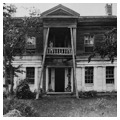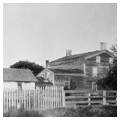Charles Grignon came from a long line of French Canadian fur traders who had achieved success in the region, in part, by marrying Native American women and thereby forging alliances with the Indians who supplied animal pelts. The children of these marriages were called métis, and métis sons found even greater success as traders because they straddled the middle ground between native and European American cultures. Grignon ran the fur-trading post that his grandfather Pierre Grignon had set up at the falls at Kaukauna, which dropped fifty feet in one mile. He also operated saw- and gristmills established by his father, Augustin Grignon. The federal government appointed Charles Grignon the official interpreter for Menominee treaties, and the Menominees considered him their trusted advisor for more than thirty years.
When Grignon built this house soon after his marriage to Mary Elizabeth Meade, Kaukauna was still a frontier outpost. Today, the house is one of the state’s oldest dwellings on its original site. The Greek Revival two-and-a-half-story building has clapboard walls and a side-gabled roof with a plain cornice. Square piers with simple capitals support a one-story porch with a balustraded roof deck, spanning the full length of the front elevation. At the center of the facade, a pedimented entrance portico rises two stories, lending an air of formality. By the early 1930s, the Grignon House stood in near ruins, but local preservationists rescued and restored it. Today it houses a museum of early Wisconsin history.









